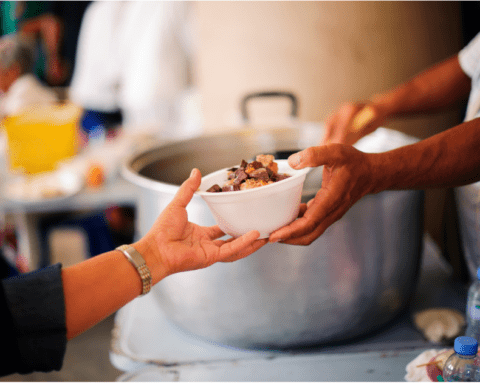Many small businesses were already facing challenges before the pandemic struck. Even with lockdown orders and physical distancing restrictions being eased, many Canadian business owners are still dealing with issues like revenue losses, layoffs, deferred rent, and additional loans. Almost 60 per cent of small businesses with less than 20 employees reported a 20 per cent loss in revenue between Q1-2019 and Q1-2020.
Immigrant-owned companies in Canada are more likely to suffer the negative effects of setbacks on the economy. According to a study released in 2019 by Statistics Canada, 81 per cent of immigrant-owned firms studied had fewer than five employees, compared with 69 per cent of firms with Canadian-born owners. Although smaller firms tend to grow faster than larger firms, they are also more likely to shrink rapidly.
“The recovery looks like it will be very weak for local community businesses, making additional cash flow hard to come by over the rest of the year. Many will not survive,” Jon Shell said.
Shell is the managing director of Social Capital Partners and a co-founder of Save Small Business. Save Small Business is a coalition of small businesses that came together in March to advocate for small businesses during the COVID-19 crisis. Since the pandemic was declared, nearly 41 per cent of businesses reported staff lay-offs, according to Statistics Canada. Small businesses with less than 100 employees that laid off at least one employee, were more likely to have laid off 80 per cent or more of their workforce than medium and large-sized businesses.
“Support for [small businesses] has been patchy at best,” argues Shell.
Government response
According to research from the Government of Canada from 2019, small businesses collectively employed 8.4 million people and accounted for nearly 98 per cent of Canada’s 1.18 million employers.
The federal government responded to the economic situation by introducing financial programs to help keep individuals and businesses financially afloat. The government introduced programs like the Canadian Emergency Response Benefit (CERB), the Canada Emergency Business Account (CEBA), the Canada Emergency Wage Subsidy (CEWS) and Canada Emergency Commercial Rent Assistance (CECRA).
Also, the Government of Canada and the Canadian Chamber of Commerce, in collaboration with EY Canada, Chartered Professional Accountants of Canada, and Imagine Canada, launched the Business Resilience Service (BRS) back in May.
BRS was a free hotline service that helped small and medium-sized business owners, not-for-profit organizations and charities in need of financial planning advice. They provided guidance on the broad range of federal and provincial programs that clients may be eligible for. The BRS supported over 3,100 organizations before the program ended on July 3.
“The road to recovery has just begun for many organizations and we know they’ll need ongoing support to reshape for the future,” remarked Kirsten Tisdale.
Tisdale is a Managing Partner with EY Canada and an advisor who supports governments and public entities through complex reform and transformations.
Tisdale said that 52 per cent of BSR’s callers sought guidance on available financing programs. She noted that as many of 49 per cent of callers reported revenue losses of 90 per cent or more when compared to the previous year. The BSR worked with organizations to assess their situation and determine their needs.
“The array of relief services can be difficult for struggling organizations to navigate or understand which is best suited for their unique situation,” Tisdale said. “All organizations have a unique set of needs that may not be completely addressed by the available government programs.”

Difficult business decisions
Troy Kelly is the owner of Outpost Coffee Roasters in Toronto. Kelly, like many other business owners, had to make some changes to their operations because of the pandemic.
Kelly started offering curbside pick-up and delivery orders while putting more emphasis on his e-commerce sales to offset revenue losses. Foot traffic at Outpost decreased by 40-60 per cent of its usual levels, Kelly revealed. He decided to introduce a monthly subscription service which includes delivery of their seasonal international coffees, craft chocolates and gift cards. Now, at least 30 per cent of his shop’s revenue is generated from online sales.
However, Kelly still had to lay off two of his employees. “That was a difficult decision, but we had to do it,” he explained.
Kelly pointed out that the community has always been concerned with the well-being of the shop throughout the pandemic. Some customers called him to see if he and the business were doing well. Others bought hundreds of dollars worth of gift cards.
“I’m really grateful for having such a loving community and we try to do the same for them, working for them,” Kelly said.
Last month, the City of Toronto launched CaféTO, a program developed in response to COVID-19, to provide more outdoor dining areas to help restaurants, bars and cafés to expand their patio space. Kelly considered the possibility of applying for an outdoor patio.
“I knew we might have to redesign the space to make it the work,” he said.
The number of new CaféTO applications dropped since Toronto entered Stage 3 of the provincial government’s reopening plan on July 31. To date, more than 600 restaurants have taken advantage of the increased dining capacity. Over 8,000 metres of roadway has been closed off to create safer, more expansive dining options for business owners. CaféTO also ensures that all locations adhere to COVID-19 safety, accessibility and physical distancing guidelines. The program is scheduled to end for the season on Nov. 15.
Photo Credit: Adriano Macedo
Experienced professional with over 25 years of experience in Communication and Journalism, specialized in People Management. Passionate about constructive journalism, storytelling, creative writing, co-creation, new technologies, social innovation and the science of well-being. My mission is to engage people based on more humane, empathic, transparent, authentic, relevant and innovative communication.





